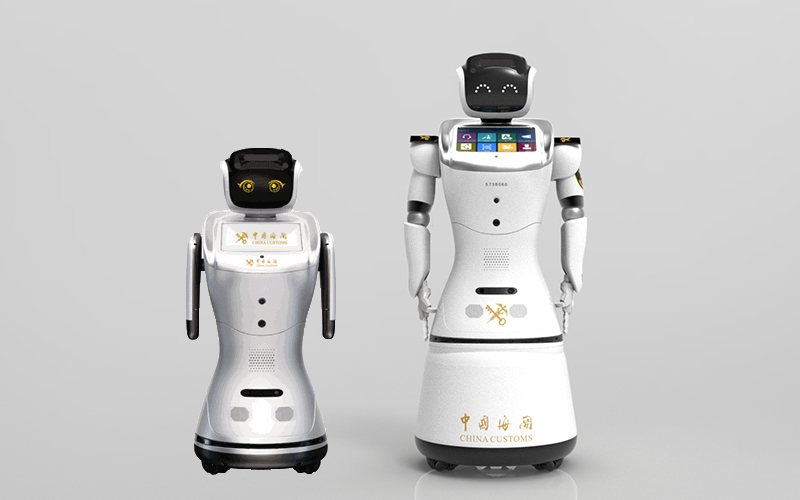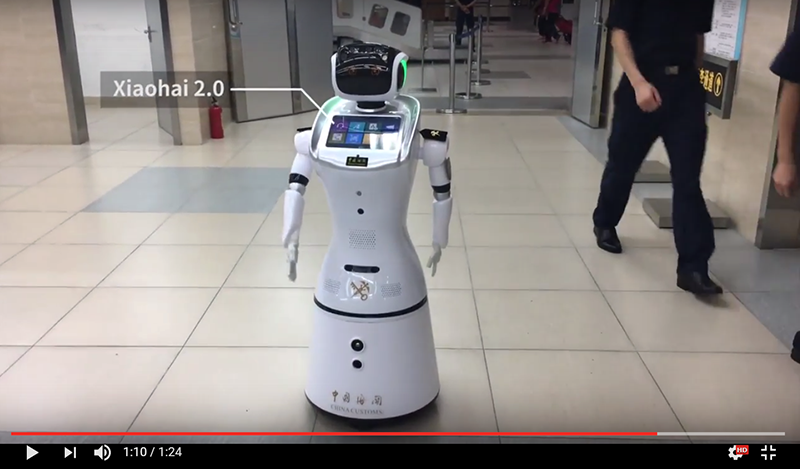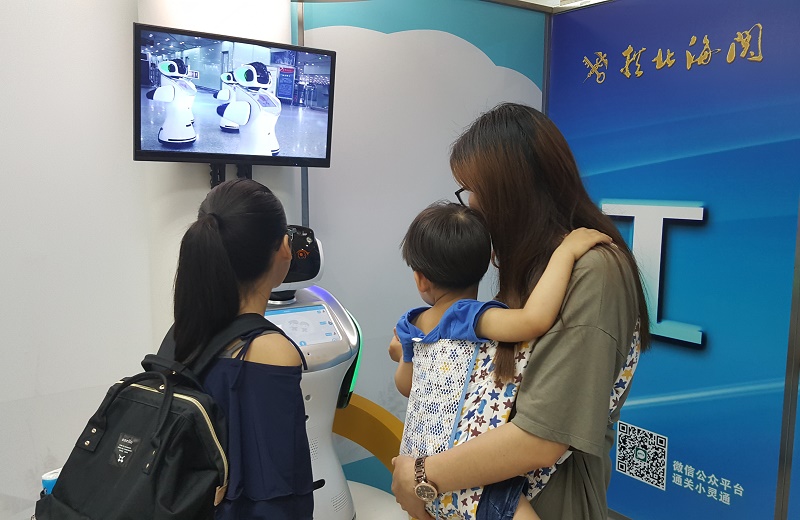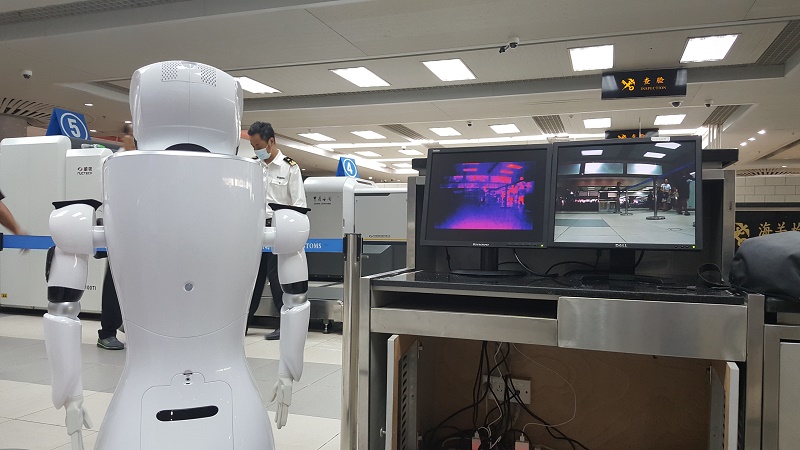[Background] To respond to the call of “Internet plus Public Service” (proposed by the State Council), on October 1st, 2016; Gongbei Customs introduced Sanbot intelligent robot to create “Intelligent Customs” and named the robot Xiaohai. Since October 1st, the customs service robots have witnessed an average of 340,000 people per day at customs.
After 9 months, Gongbei Customs welcomed a new generation Xiaohai customs service robots. Compared to the original version, this new and upgraded generation customs service robot comes with many more advantages. The following are just a few of the advantages:

1. The new generation is much taller, making it easier for adults to use. Travelers do not have to bend over to operate and interact with Xiaohai robot.
2. The arms, manufactured using 3D printers, are upgraded to be more human like and even have moving hands.
3. A thermal imaging function was added onto the pedestal of the robot: one HD camera helps the robot to lock onto the inspected object and the thermal imaging camera captures the thermal image.
All of the apps are customized for customs passenger services and inspection services, such as
Passenger inquires
Random inspections
Translation
Tax Inspections
Background checks
Facial recognition
and more
Let’s have a look on how the professional service robot help customs officials with customs services.

Click to watch how Xiaohai 2.0 works for Customs
Dispersing Information: Sanbot broadcasts notifications through voice and video to help guide first-entry and multiple-entry passengers (usually planning on staying for roughly 15 days) on which channels to go through. Also, the content on the big-screens connect to Sanbot robot via HDMI for a matching broadcast to help better notify passengers.
Informing travelers about important laws: Sanbot never stops broadcasting and informing travelers about customs laws, regulations, and forbidden contraband items, helping passengers to abide by the laws and regulations and give them the knowledge report any illegal activity.
Inquiry Services: In Sanbot’s system, this intelligent robot is capable of answering thousands of frequently asked questions about customs services. A traveler only needs to activate/wake-up Sanbot. There are three ways to wake-up Sanbot customs service robot and start asking questions. Passenger can click the microphone App, call “Xiaohai, Xiaohai” or they just stand in front of the robot and Sanbot will wake up when its camera detects a passenger’s face via facial recognition. During the inquiry, passengers can choose to call a human service person if the robot cannot answer some special or extremely specific questions.

However, some passengers complained about the interactions with the service robot and how they were not as good as expected. Chen Lei, the customs service robot engineer from QIHAN Technology, responded to the customs officials and media, “During rush hour, the loud noise affects the robot’s voice recognition and this is the drawback of most voice recognition systems; and the other reason is that the customs content in the robot are professional and written in a standard dialect, and it may not recognize it if the passengers’ questions are too colloquial.”
With the intelligent AI system powered by IBM Watson, Sanbot supports text translation, voice translation and more translation techniques in 10 languages for passengers’ inquiring services. In addition, passengers can check out their goods’ tax through Sanbot’s Tax Inspection App when they go through customs clearances.
Thermal Imaging Inspections: A thermal imaging function was added onto the pedestal of the robot: one HD camera helps the robot to lock onto the inspected object and the thermal imaging camera captures the thermal image. With this function, the robot helps custom officials examine passengers’ bags, suitcases, etc. and is mainly used beside the inspection line. The function reveals the covered goods that people cannot see with the naked eye. It helps monitor whether passengers smuggling undeclared or contraband materials, improving the customs officials’ speed and accuracy and dealing with customs inspections and combat smuggling effectively.

Sanbot can perform even more functions for customs inspections. Once the one-key defense is deployed, Sanbot will send an alert once a moving object is detected in the specified areas; if a criminal’s ID information is inputted into the robot’s database, Sanbot sends the alert to customs officials once the suspect is detected so the officials can do further inspection on the suspected passenger, fighting against crimes and effectively guarding people’s safety.